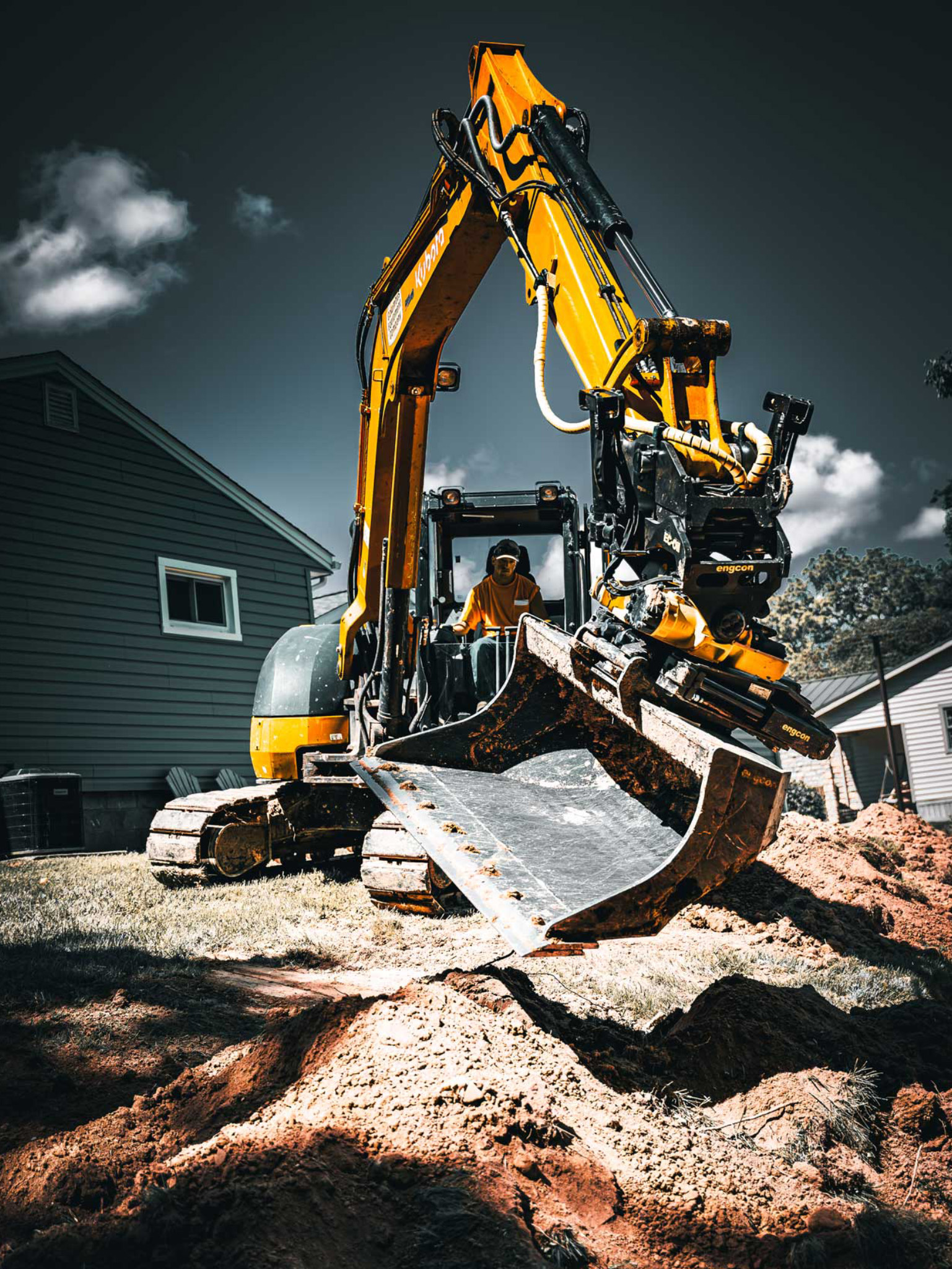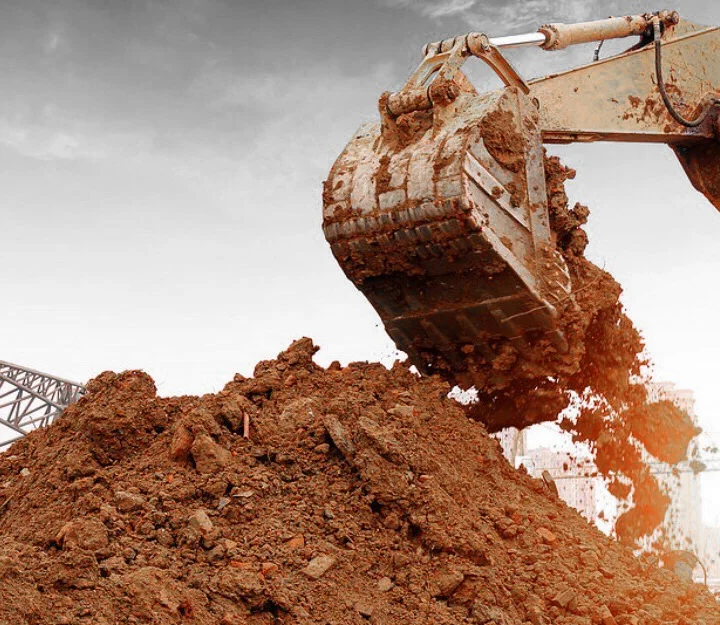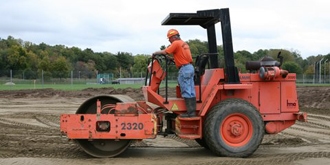Lancaster Excavation - Expert Excavation Services in Lancaster, OH
Lancaster Excavation - Expert Excavation Services in Lancaster, OH
Blog Article
Revealing the Art of Excavation: Pro Tips for Safe and Effective Digging
In the world of excavation, the mastery of safe and effective excavating is an art kind that needs precision, adherence, and expertise to well-known methods. As dirt is turned and earth is moved, the intricacies of excavation reveal themselves, requiring an eager understanding of equipment, dirt structure, safety procedures, and environmental factors to consider. The knowledge needed to browse these elements efficiently can indicate the distinction between a successful excavation task and a potential catastrophe. By unraveling the layers of this elaborate procedure, a world of strategies and understandings awaits those looking for to raise their excavation abilities to new elevations.
Value of Correct Tools
To make certain the security and effectiveness of any excavation task, utilizing the ideal devices is critical. The right devices not just enhance performance however also minimize threats related to excavating. Excavation jobs vary in range and intricacy, ranging from small domestic landscaping work to large building and construction endeavors. No matter the task size, having the right tools can make a considerable difference in the outcome.
Excavators are fundamental pieces of equipment in any kind of excavating procedure. These functional equipments come in different sizes to fit different task requirements. Miniature excavators are perfect for smaller sized tasks, while larger excavators tackle much more comprehensive projects effectively. Backhoes are another necessary equipment kind, combining the features of a loader and an excavator in one equipment. They are important for tasks needing adaptability and ability to move.
Bulldozers stand out in jobs that need pressing large quantities of soil or particles. By investing in the ideal tools, excavation jobs can be completed safely, on time, and with precision.
Comprehending Soil Composition
An extensive grasp of dirt structure is essential for carrying out excavation jobs with accuracy and safety and security. Recognizing the different types of soil is crucial as it directly impacts excavation techniques, tools selection, and total project efficiency.
Sand fragments are the largest and give excellent water drainage but use little cohesion. Silt fragments are smaller sized than sand yet larger than clay, offering modest drainage and communication. Clay fragments are the smallest and give high communication however bad drainage. Organic matter, such as decaying plant material, influences dirt fertility and security.
Prior to starting excavation, carrying out soil examinations to identify its structure and attributes is vital. This information helps in choosing the ideal equipment, applying safety measures, and creating excavation approaches customized to the certain soil conditions - excavating ohio. By recognizing soil make-up, excavation experts can improve job end results while making certain safety and adherence to best methods
Security Actions and Methods
Understanding soil structure is the keystone whereupon security actions and procedures for excavation tasks are developed, making certain the wellness of workers and the success of the endeavor. When it pertains to safety during excavation, there are numerous essential steps that need to be executed to mitigate risks and avoid crashes.
Most importantly, prior to any excavating begins, a complete evaluation of the website should be performed to determine any type of potential threats such as underground energies, unpredictable dirt problems, or nearby frameworks that could you could check here position a risk. It is critical to have a proficient person manage the excavation process to ensure that all safety and security protocols are complied with purely.
Furthermore, all workers included in the excavation needs to be properly educated in safe excavating practices and the appropriate procedure of equipment. By sticking to these safety and security measures and protocols, excavation projects can be finished efficiently and without case.
Reliable Excavation Preparation
When starting an excavation project, thorough planning is important to make certain effectiveness, security, and successful results. Reliable excavation preparation involves a number of crucial actions that are important for the smooth implementation of the task. The initial action is to carry out a thorough website analysis to determine any kind of possible threats, such as below ground utilities or unstable soil conditions. This details is vital for creating a comprehensive excavation plan that consists of safety steps and run the risk of reduction techniques.
As soon as the website analysis is complete, the following action is to create a clear timeline and schedule for the excavation tasks. This consists of figuring out the series of tasks, equipment needs, and workforce allocation. Correct scheduling aids stay clear of delays and guarantees that the task remains on track.

Furthermore, communication amongst all employee is paramount during the preparation phase. Clear instructions, routine updates, and efficient sychronisation are important for an effective excavation job. By investing time and effort in thorough preparation, excavation groups can considerably improve efficiency, minimize dangers, and accomplish successful outcomes.

Taking Care Of Environmental Factors To Consider
With increasing focus on environmental sustainability in building and construction techniques, taking care of environmental factors to consider you can try here has actually become an essential element of excavation tasks. Excavation tasks have the potential to impact the surrounding setting through soil disintegration, debris drainage, environment disruption, and contamination of water sources. To minimize these dangers, it is vital to apply best practices that focus on environmental management.

Moreover, correct waste management is crucial to stop dirt and water contamination. Executing treatments for the disposal of dangerous products, recycling of waste products, and reducing the usage of unsafe chemicals can significantly reduce the ecological effect of excavation jobs. By integrating these methods into excavation planning and implementation, building business can make sure that their tasks are not only risk-free and effective but also environmentally responsible.
Conclusion
In verdict, understanding the art of excavation calls for a complete understanding of proper equipment, dirt composition, precaution, and efficient planning. By complying with these standards and taking into consideration ecological variables, excavations can be carried out securely and effectively. It is important to focus on safety and security and efficiency in every digging job to guarantee effective end results.
As soil is turned and earth is moved, the details of excavation expose themselves, demanding a keen understanding of tools, dirt composition, security methods, and ecological factors to consider.To make sure the security and effectiveness of any kind of excavation job, making use of the appropriate tools is extremely important.A detailed grasp of dirt make-up is essential for carrying out excavation tasks with accuracy and security. Recognizing the different kinds of dirt is vital as it straight impacts excavation methods, tools option, and overall job effectiveness. By recognizing dirt structure, excavation experts can enhance task outcomes while guaranteeing safety and adherence to ideal techniques.
Report this page